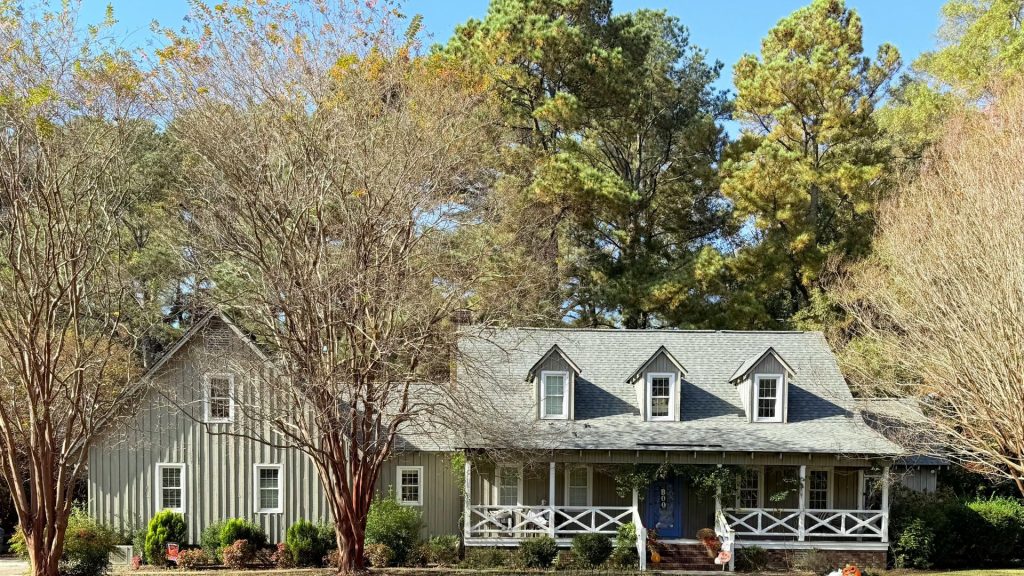Understanding why trees die is essential for keeping our environment healthy since trees play such a vital role in our world. Trees are amazing living things that can survive through harsh conditions and help both wildlife and people in countless ways. But even the most vigorous trees have their limits and will start to show signs of trouble when they’re under too much stress.
In Billerica, MA, and the surrounding areas, trees face many challenges that can lead to their death – diseases, bug infestations, harsh weather, and even damage from people who don’t prune them correctly. Though trees usually live much longer than animals or people, they eventually give in to these problems. Both scientists and commercial tree maintenance experts are working hard to understand better why trees die so they can protect our forests and neighborhood trees.
Environmental Conditions
Understanding why trees die starts with looking at the basics: soil quality and weather. Just like people need food, water, and air to live, trees need these essentials, too. During droughts, trees become thirsty and stressed. In areas with poor soil drainage, tree roots can’t access the nutrients they need.
Too much sun can burn trees, while harsh winters can freeze and damage them. These stresses wear trees down over time. You can usually tell a tree is struggling when its leaves turn brown, start to wilt, or fall off at the wrong time of year. Tree experts watch for these warning signs to understand better why trees die and to help save them before it’s too late.
Read More: Tree Health Indicators: What to Watch For
Disease
Tree death in Billerica often comes down to diseases like Dutch elm disease, chestnut blight, oak wilt, and anthracnose. These tree illnesses are like serious infections that attack different parts of trees—their leaves, roots, and bark. Think of a tree’s systems like your body’s circulatory system – these diseases damage the tree’s “veins” that supply nutrients and water throughout the tree. At first, you might only notice a few dead leaves, but as the disease spreads, it stops the tree from feeding itself properly.
What makes these diseases especially dangerous is how easily they can spread from one tree to the next. They can travel through connected roots underground, catch rides on insects, or float through the air as tiny spores. One sick tree can quickly lead to many sick trees, turning healthy woods into struggling forests. Treating the signs of tree diseases early is critical for keeping Billerica’s trees healthy.
See Also: Top Four Tree Diseases in Billerica: Prevention Tips
Pests
Figuring out the reasons why trees die in Massachusetts often involves looking at bugs that attack our local trees. In our state, we have both local pests and newcomers like winter moths, spotted lanternflies, and the destructive emerald ash borer that kills trees. These insects usually go after trees that are already having a tough time because of weather stress or diseases that are common in Massachusetts, like problems affecting maple trees, white pine needle disease, and various fungal infections that love our humid summers.
In Billerica, the damage follows a worrying pattern. These pests eat leaves, tunnel under bark, or drill holes straight into the tree trunk, cutting off the flow of water and nutrients – like blocking the tree’s plumbing system. Once bugs have heavily infested a tree, it rarely gets better without help, especially trees like ash, hemlock, and some maples that are common in our area. Tree experts across Massachusetts continue to study why trees die from these pests so they can develop better ways to protect trees in Billerica’s neighborhoods and wooded areas.
Natural Disasters
Determining the cause of tree death in Massachusetts often comes down to the state’s demanding and changing weather patterns. Trees in Massachusetts face a real challenge from Mother Nature throughout the year. In winter, heavy ice storms coat branches until they snap under the weight. During summer, long dry spells leave trees thirsty and stressed.
In towns like Billerica, trees struggle with winter ice that breaks branches, powerful storm winds that knock over even large trees, and confusing temperature swings that trick trees into budding too early or staying active too late in the season. Tree experts across Massachusetts are studying why trees die during these weather events to help grow more robust trees that can better handle whatever Massachusetts weather throws at them in the future.
Age
Having a factual knowledge of why trees die as they get older is fascinating because trees age differently than people or animals do. Unlike humans, trees can live for hundreds or even thousands of years. As trees age, they deal with damage in an innovative way – they seal off injured parts rather than trying to heal them. Think of it as closing a door to a damaged room in a house rather than repairing it.
While this strategy works well in the short term, it creates problems over time. Each sealed-off section means less energy can flow to that part of the tree. As decades pass, older trees have more sealed-off sections and less energy for new growth. Eventually, the tree reaches a breaking point where it can no longer support itself.
Understanding Why Trees Die is The First Step In Keeping Them Alive – Contact Marquis Tree Today
Knowing the top causes of why trees die gives us the power to protect our ecosystem better. While trees may appear mighty and enduring, they’re sensitive to their environment and require proper care to thrive. By recognizing the warning signs of tree distress—whether from disease, disasters, pests, weather damage, or age—you can take action before it’s too late for the trees on your property.
If you’ve noticed concerning symptoms in your trees or need professional removal of a tree that couldn’t be saved, contact Marquis Tree Service today for a free assessment. Our experienced arborists understand why trees die and can recommend the best approach for your situation, whether that’s treatment to save a struggling tree or safe, efficient removal when necessary. Let us help you maintain a healthy, beautiful landscape while protecting your property from the hazards of declining trees.

